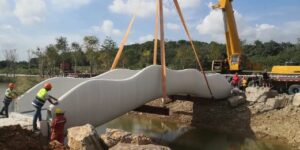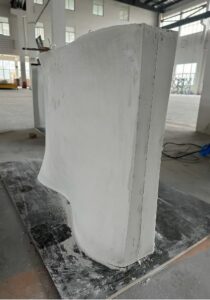6/01/24

Architecture is a physical foundation of human activities and social developments. However,
from a traditional perspective, architecture seems to be perceived as a “labor-intensive”, “time-consuming”, “rigid design with less flexibility”and“serious carbon emission” industry. Above-mentioned drawbacks & characteristics limit applications in many scenarios especially where total lead time has to be short, design structure is complex and carbon emission reduction is important.
3D printing is playing a significant role in creative buildings, not only residences but entire urban
Architecture often involves complex designs of impressive structures, most of which have been interacted with in daily life. Additionally, many designs illustrate an artistic interpretation that represents the architect’s style and work. Thanks to the advancement of 3D printing which makes Seeing is Believing, barriers of design has been eliminated by this emerging technology.
The traditional process of making complex architecture requires significant manual labor and molds are usually essential in such cases which cost tens of thousands of dollars and take weeks to build. However, 3D printing shorten lead time greatly as it prints final part directly – no mold is needed in majority of the cases. What’s more, a printer can work continuously up to several days when appropriate printing settings is applied.. Material is a non-negligible part of total cost indeed, fortunately, more and more materials have been developed for printing architecture with better performance and lower cost.
3D printing used in architecture could also be a greener solution to modern construction, because::
Polymaker is reputational for its proficiency in material-extrusion based 3D printing area. with
comprehensive solutions. For architecture scenarios, Polymaker successfully launched PolyCore series to meet customer’s diversified demands and lead marketing trend. PolyCore™ series are all pellets, aiming for big area additive manufacturing (BAAM) or middle area additive manufacturing (MAAM). Let’s deep dive a bit into PolyCore™portfolio:
Article from our partner Polymaker